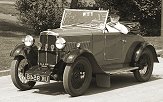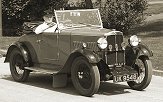|
The A.J.S. Light Car
Background
In the summer of 1927 A.J.S. secured a lucrative contract to
build bodies for the new Clyno 'Nine' light car. The contract
couldn't have come at a better time for A.J.S. because motorcycle
sales were in decline due to the depression and the introduction of
cheaper small cars. The bodies consisted of a wooden framework that
supported fabric covered panels. They were built in batches of 50
and made at the Lower Walsall Street works. Clyno always
tried to ensure that its products sold at a lower price than
the competition, and gave value for money. This worked well
until the company tried to take on Austin and Morris in a
cost cutting war.
|
|
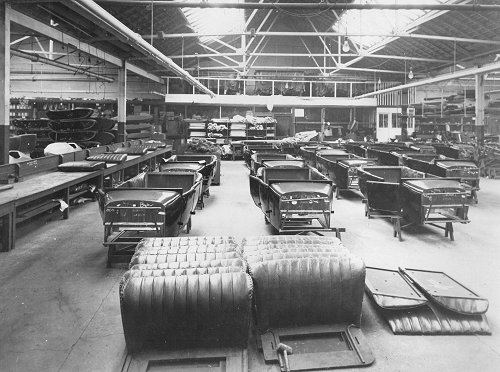
Building Clyno car bodies at Lower
Walsall Street Works. |
Morris had just launched the Morris 'Minor' and
Austin had released the Austin 'Seven'. Clyno's answer
to the competition was the 'Century', a 'Nine' chassis covered in
cheap fabric that sold for £112.
The car was unpopular with dealers and only about 300 were
built. It destroyed Clyno's reputation, the car being known as
the 'Cemetery'. The company had recently invested heavily in a
new factory at Bushbury and the low sales quickly led to
cashflow problems.
Clyno appointed a receiver in February 1929 and the company
went into liquidation.
|
| Read about
the AJS factories |
 |
| The birth of the
A.J.S. car The demise of Clyno came at a very bad time for A.J.S. who were also loosing money
due to lower than expected motorcycle sales and the demise of the
radio business. To try and offset the loss of the Clyno contract
A.J.S. decided to produce its own light car, the A.J.S. 'Nine'. The
car was first announced in December 1929 and designed by Arthur G. Booth who worked for Clyno and
designed the Clyno 'Nine'. The diamond shaped A.J.S. logo was
designed by his daughter over breakfast one day. Arthur became known
as "The General" at the
A.J.S. works. |
| Read a paper that was given
by Arthur G. Booth and view some of his Clyno photographs |

|
| The chassis was built by John Thompson
Motor Pressings at Bilston, the bodies were made at
Lower Walsall Street Works, and the final assembly took place at Graiseley
Hill.
The engine was a 4 cylinder, Coventry Climax, rated at
8.92h.p. The car had a 12 volt Lucas ignition system, 3 speed +
reverse gearbox, Solex carburettor, 8 gallon fuel tank and wire
wheels with Avon tyres. The metal instrument panel was finished
with a walnut grain paint effect and included a lighting control
switch.
The lights on the instrument panel also illuminated the floor in the driver's
compartment. The seats at the front were well upholstered bucket seats with
tilting backs, and the wide rear seat had arm rests. The windscreen was
made of safety glass and fitted with a vacuum wiper. The car, with a fuel
consumption of around 36m.p.g. could achieve 60m.p.h., and was launched in August 1930
after exhaustive testing. The initial model, a four door fabric bodied saloon,
selling for £230 was soon followed by two different versions,
a coachbuilt saloon selling for £240, and a
coachbuilt 2 seater with dickey priced at £210.
| Read a contemporary
review about the A.J.S. car |
 |
| |
|
|
|
Chromium plated bumpers were available for an extra
£5.5s.0d. and a sliding roof was also available for the saloon, at
an extra £7.10s.0d.
The initial sales were good
and increased after the Olympia show in
October.
Unfortunately the car was
a little on the expensive side when compared with the
competition and so in February 1931 prices on all models were
reduced by £11.00. At the same time the cheaper 4 door fabric bodied
'Richmond' saloon was launched and priced
at £197. |
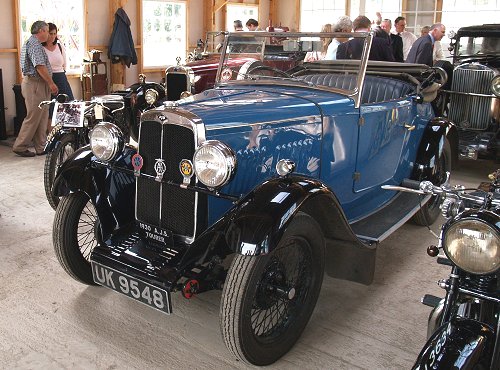
The A.J.S. 'Nine' coachbuilt
2 seater with dickey, on display in Conway Garage at the Black
Country Living Museum. |
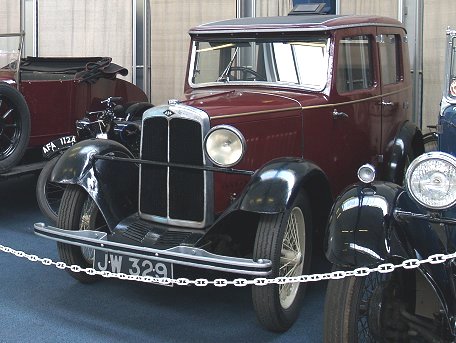
The 4 door, coachbuilt,
A.J.S. 'Nine' saloon that's in the collection at the Black Country
Living Museum. It has an interesting past as it
once belonged to Joe Stevens (senior). |
In an attempt to reduce the
price of the car even further, A.J.S. decided to build its own car engines.
The final engine was more or less a carbon copy of the Coventry
Climax.
Sadly A.J.S. itself became a victim of
the depression in October 1931 when it went into voluntary
liquidation. The cars sold extremely well in the short time
they were produced.
Unfortunately it is not known how
many were built. The highest surviving chassis number is
1064 so it could be that just over a thousand were made,
which is just about possible because the cars were only in production
for around 15 months, and were built in small batches. |
| This was quite an achievement in such a short time. If the company had survived, the
well-built and well-designed car would probably have had a good
future. |
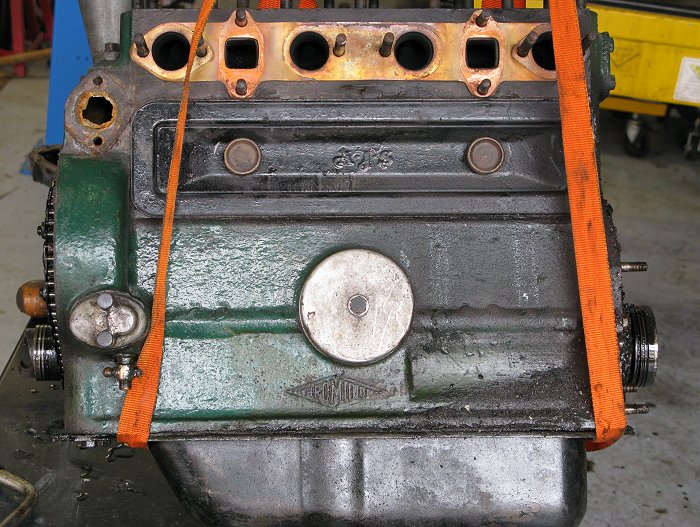
Several years ago the engine in
the A.J.S. saloon at the Black Country Living Museum was
sent away for repair. I took this photo when the engine
was being lifted out of the car. As the car is a late
model, it has an A.J.S. engine, rather than a Coventry
Climax engine. Even though A.J.S. had cash-flow problems
at the time the engine was built, quality was paramount,
as can be seen by the Cromidium sign on the lower
casing. Chromidium is a high strength iron-chromium
alloy that is resistant to wear and corrosion. |
|
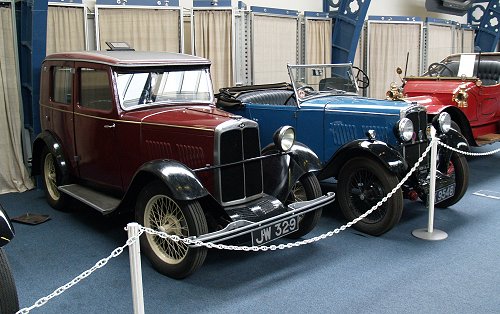
The two A.J.S. cars that can be seen
at the Black Country Living Museum. |
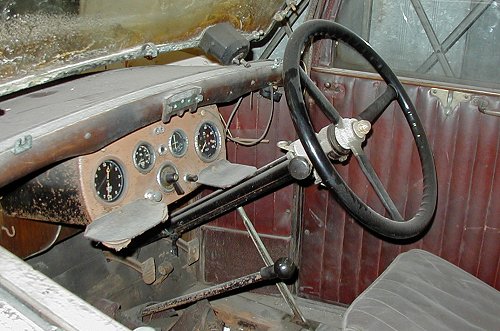
| The interior of the A.J.S.
'Nine' saloon at the Black Country Living Museum
before it was restored. |
|
| Derek Spencer at the wheel of the
A.J.S. 2 seater at the Black Country Living Museum. |
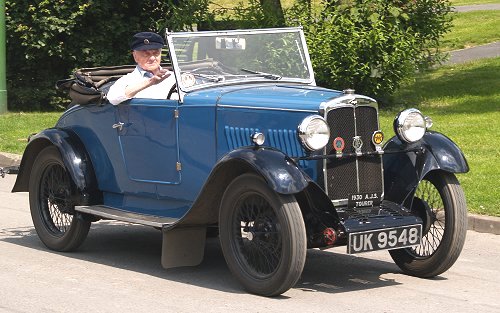 |
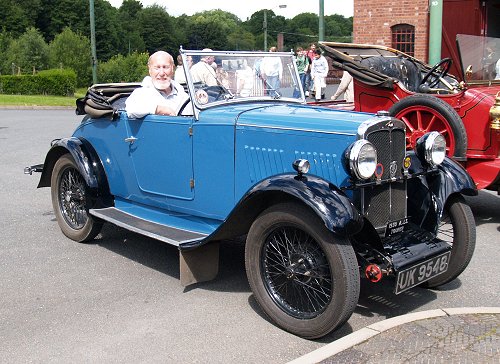 |
Another view of the
A.J.S. 2 seater at the Black Country Living Museum with Stan
Davis in the driving seat. |
| A final view of the
A.J.S. 2 seater at the Black Country Living Museum with Stan
Davis in the driving seat alongside Trevor Davies. |
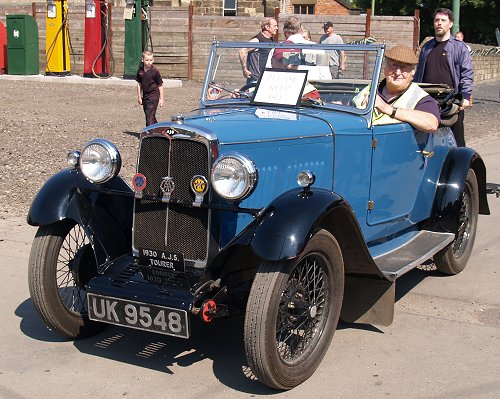 |
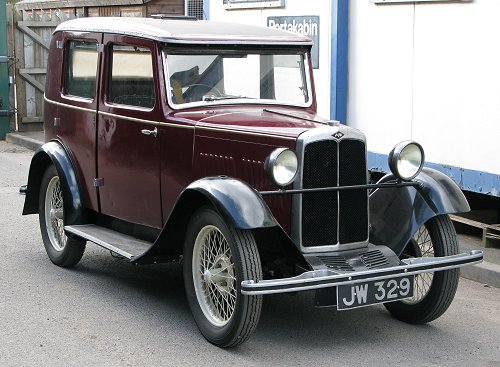 |
Another view of the 4 door, coachbuilt,
A.J.S. 'Nine' saloon that's in the collection at the
Black Country Living Museum. |
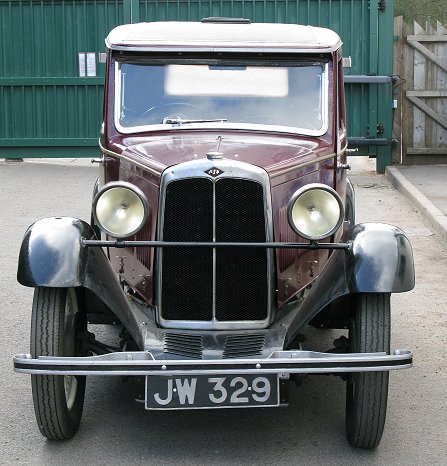
The front of the A.J.S. 'Nine' saloon at the Black
Country Living Museum.
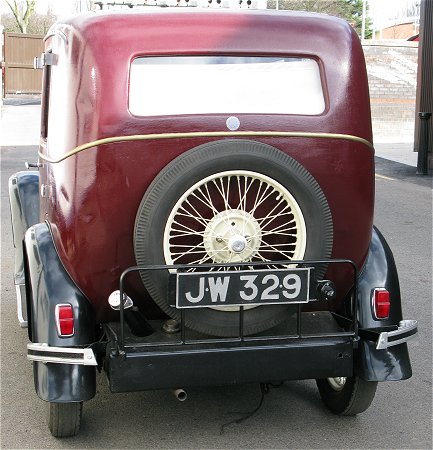
The back of the A.J.S. 'Nine' saloon at the Black
Country Living Museum.
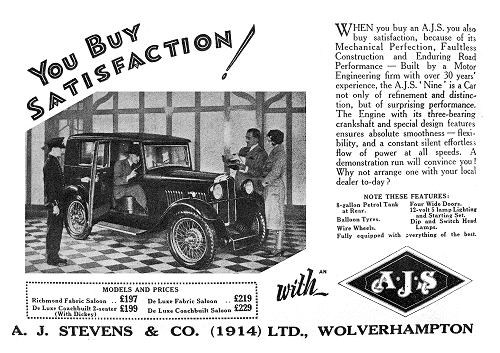
An advert from August 1931.
|
In January 1932 the 'Nine'
was sold to Willys Overland Crossley Limited of Heaton Chapel,
Stockport for £9,500, and re-launched in March as the 'New A.J.S. Nine', a re-styled, coachbuilt 4 door saloon,
costing £229.
The price was soon reduced to £189 when it was realised that the car was in direct competition with the
Crossley 'Ten'.
Sales were not good and the Stockport
based company went into liquidation.
Sadly only 33 A.J.S. cars
are known to have survived. 4 of them are in Australia, 2 in New
Zealand, 2 in Ireland, and 25 in the UK.
|
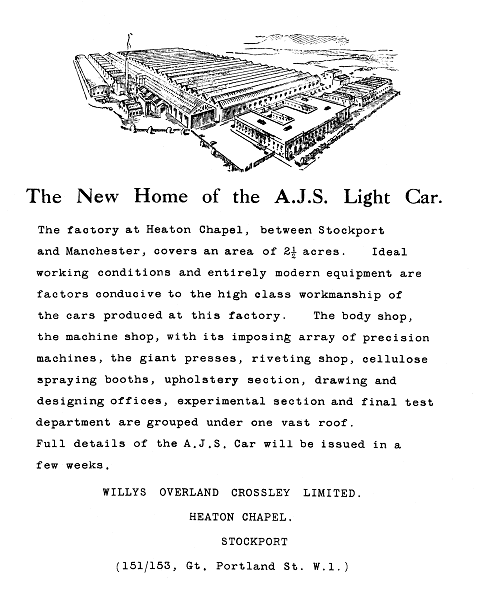
An advert from 'Motor Commerce',
February 1932. |
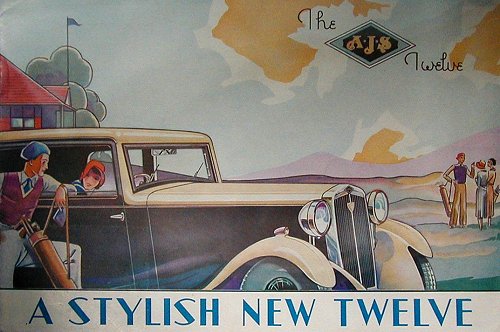 |
The front cover of the A.J.S.
'Twelve' leaflet.
The car, produced by Willys -
Overland Crossley Ltd. was first shown at the 1932 Olympia Show, and
priced at £325.
It had a 1.5 litre o.h.v. engine
but never went into production. |
|
